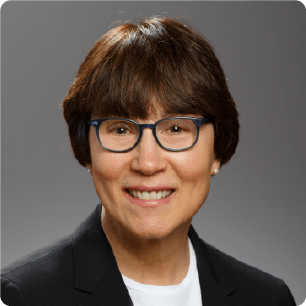By Pam Diamond, MD
CMO & Co-Founder of Curavit
Long days and nights with only intermittent hours of sleep are not uncommon for surgical interns of any generation or gender – and such was the case in 1985 when I was doing my General Surgery internship at Strong Memorial Hospital at the University of Rochester in New York. But, when I finally got my chance for a few precious hours of rest, I had to bang on doors…literally.
I was the only woman in a cohort of 20 interns, and the on-call room where we could recharge was in the back of the male doctors’ locker room. When I was on-call (at least every third night), I would have to bang loudly on the male locker room door, announce my presence, and creep awkwardly along the side wall with my eyes averted, head down, to get to the door of the on-call room where I could rest. There was no female doctors’ locker room so I would change into scrubs in the nurses’ locker room.
I was too exhausted to think too much about it at the time – but I was aware that, as a woman, I was battling some subtle and not-so-subtle acts of discrimination to become a surgeon.
In 1985, 2.8% of general surgeons in the U.S. were female. Across common surgical specialties – 6.1% of neurosurgeons, 7.7% of orthopedic surgeons, 4.1% of plastic surgeons, 15.2% of ENT surgeons, 14% of ophthalmology surgeons, 2.6% of urology surgeons, 0% thoracic surgeons, and 22.3% of OBGYN surgeons were female.
Today, those numbers are much different: Of the 32,876 surgeons employed in the U.S., 48.8% are women, while 51.2% are men. And strikingly, 38% of general surgery residents in the country are women.
I completed my residency at Harvard Medical School and Massachusetts Eye and Ear Infirmary (MEEI) in 1990, graduating with all male residents, and went on to become a board-certified otolaryngologist/ head and neck surgeon. I continued working at Harvard Medical School and MEEI and remained affiliated with these organizations for over 30 years. I had the pleasure of caring for thousands of patients and teaching many medical students and residents while serving in leadership roles, including the MEEI Board of Surgeons, MEEI Pharmacy and Therapeutics Committee, and the Atrius Health Site Council.
While I broke down some doors during my clinical career, after three decades observing the problems in clinical research, I pivoted sharply. I wanted to make a broader impact on healthcare by contributing to research and working to modernize clinical trials. Joel Morse, Dave Hanaman, and I co-founded Curavit Clinical Research in October 2019 when – like the rest of the world – we had zero premonition about the pandemic yet to come that would cause clinical trial activity to grind to a halt. Our timing was uncanny.
Curavit is a virtual clinical research organization (vCRO) so our services helped fill a huge hole during the early days of COVID by enabling life-changing clinical trials to continue remotely using digital technologies. Today, decentralized clinical trials (DCTs) continue and are moving from edge case to main case and scaling across the enterprise. According to Medidata, average levels of decentralization in clinical trials pre-pandemic were at 43%, reaching 55% in 2022, and expected to reach 66% within the next five years.
Catalyzed by a pandemic but evangelized by success, we are finally seeing clinical research transform.
At Curavit, we see a future where more clinical trial protocols will be designed from the outset with digital-first principles that enable greater access to clinical trials among all genders, races, and demographics. This future will enable clinical research to move faster to bring more life-saving medicines to more people for less cost and enable more pharmaceutical companies to invest in rare and ultra-rare disease studies because we can open trials up to people wherever they live.
I also envision a future where women are equitably represented in clinical trials across all therapeutic areas. Unfortunately, the number of female participants in research falls short today, especially in three disease areas where women are affected most – cancer, cardiovascular disease, and psychiatric disorders, where 60% of people are female, but just 42% of trial participants are female.
There is more work to do, but there is also hope for a better future with innovative technology, new operational models, and – most importantly – less bias.
It’s hard to believe that the place where I was once the only female intern, graduated a class of General Surgeons consisting of all women in 2017 – a feat set in motion decades before. And in that time, I broke through the glass ceiling to become Chief Medical Officer and co-Founder of a startup company, but I know I’m still in the minority…for now. Through my work at Curavit and personal advocacy, I aim to end these disparities both in the male-dominated technology world and in clinical research.
But, at the very least, I will work to ensure that no woman ever again has to bust through a male locker room to make it on the other side.
Dr. Pam Diamond is Co-founder and Chief Medical Officer of Curavit, a virtual contract research organization (VCRO) that designs and executes decentralized clinical trials. At Curavit, Dr. Diamond provides medical and scientific expertise and oversight to the design and execution of Curavit’s decentralized clinical trials. She received her medical degree from the University of Rochester School of Medicine and completed her General Surgery internship at Strong Memorial Hospital of the University of Rochester. Dr. Diamond completed her Otolaryngology/Head and Neck Surgery residency at Harvard Medical School/MEEI. She can be reached at pam.diamond@curavitclinicalresearch.com.









